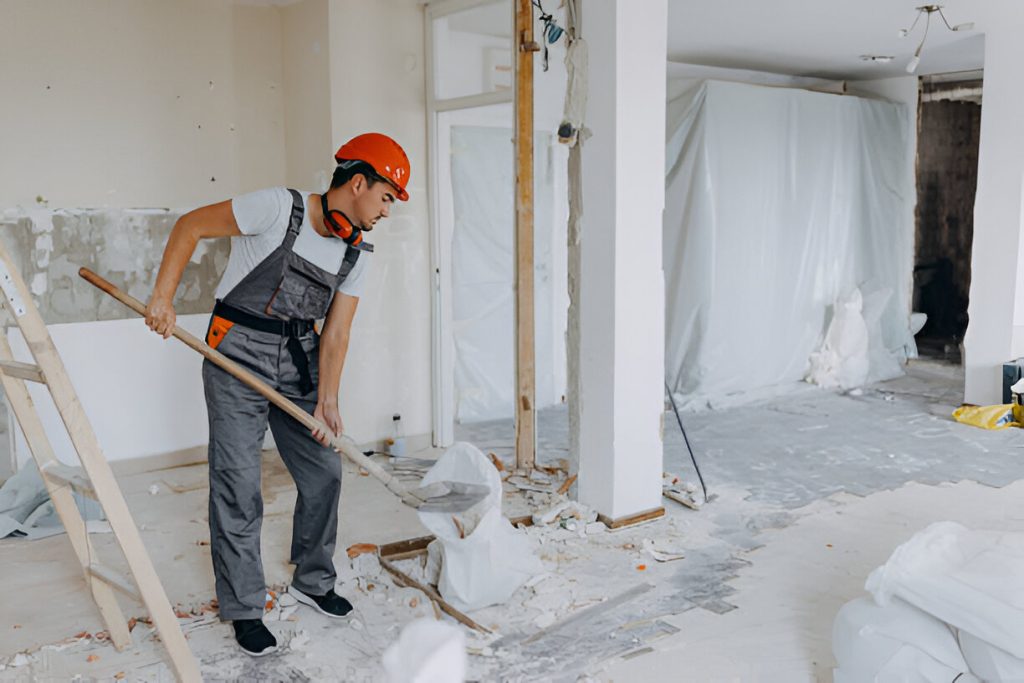Every construction or remodelling project ends with a messy reality: piles of dust, scraps, and leftover materials. Even when the work is finished, debris makes a property look incomplete and unsafe. Unattended waste can cause accidents, delay inspections, and frustrate clients waiting to enjoy their new space.
Fortunately, there’s a better approach. With efficient post-construction cleanup, you can clear away debris quickly, dispose of materials responsibly, and present a polished, ready-to-use property. Smart debris removal methods save time, improve safety, and protect the environment.
Why Construction Debris Removal Matters
Construction debris is not just unsightly; it carries risks and costs. Loose nails, sharp metal, and broken concrete can harm workers and damage equipment. Leftover materials also slow down the handover process and may lead to compliance issues.
A clean site signals professionalism and ensures projects are completed on schedule. Effective cleanup also protects your reputation, showing clients that every detail has been managed.
Common Types of Construction Debris
Not all waste is the same. Understanding what gets left behind helps in planning smarter removal.
- Wood and drywall – scraps, broken boards, and sheet cuttings.
- Concrete and bricks – heavy rubble requiring proper disposal.
- Metals and plastics – recyclable but often mixed with other debris.
- Roofing and tiles – bulky, fragile materials needing careful handling.
- Hazardous waste – paint, adhesives, or chemicals needing safe disposal.
Proper building material disposal ensures that each category is managed responsibly and efficiently.
Traditional vs. Smarter Removal Methods
For years, the standard process meant renting dumpsters and assigning workers to haul debris. While this works, it’s time-consuming, unsafe, and expensive.
Smarter methods rely on renovation debris hauling services that specialize in quick, safe, and eco-friendly disposal. These teams bring the right equipment, sort materials on-site, and partner with recycling centers.
Compared to traditional approaches, this reduces costs, saves labor hours, and keeps projects on track.
The Benefits of Professional Debris Removal Services
Choosing professional services for construction site waste removal offers many advantages:
- Speed: Crews clear debris faster with advanced tools and vehicles.
- Safety: Trained workers handle heavy, sharp, or hazardous items securely.
- Compliance: Licensed companies follow disposal regulations and recycling standards.
- Efficiency: Sites are ready for inspections or handovers without delays.
By outsourcing cleanup, contractors free up workers to focus on completing the actual build.
How Smarter Debris Removal Boosts Project Efficiency
A cluttered site slows everyone down. Workers trip, equipment breaks, and schedules slip. Clean environments increase productivity, reduce risks, and shorten timelines.
With remodeling debris disposal handled professionally, teams can concentrate on finishing details instead of hauling waste. This directly translates to smoother workflows and faster project delivery.
What Happens to Removed Construction Waste?
Debris does not simply disappear, it follows a path of responsible handling.
- Recyclables like metal, concrete, and wood are sorted for reuse.
- Usable materials are donated to charities or reuse centers.
- Hazardous waste is transported to approved facilities for safe treatment.
This approach ensures environmental responsibility while reducing landfill pressure.
Choosing the Right Debris Removal Partner
Not all services are equal. The right company can make or break your cleanup process.
Key Qualities to Look For
- Licensing and insurance for compliance and safety.
- Eco-friendly practices that prioritize recycling.
- Reliable turnaround times to keep projects on schedule.
- Transparent pricing without hidden fees.
Asking the right questions before hiring ensures you select a trusted partner for long-term collaboration.
Frequently Asked Questions
How should debris be removed from a construction site?
By sorting materials, recycling usable items, and hauling the rest with professional services.
What is the cheapest way to get rid of construction debris?
Recycle or repurpose materials and use local landfills or drop-off centers.
Why is it important to eliminate debris?
It prevents hazards, ensures compliance, avoids delays, and keeps the site usable.
What is the clearance and removal of debris?
It’s the collection, sorting, and safe disposal of leftover construction or renovation waste.
What is the technology for debris removal?
It includes hydraulic loaders, recycling machines, dust control systems, and smart waste management tools.
Conclusion: Smarter Cleanups for Stress-Free Projects
Every project deserves a strong finish. Leaving debris behind ruins the impact of new construction or remodeling work. By choosing smarter methods, such as post-construction cleanup, you ensure a clean, safe, and polished environment. This not only satisfies clients but also boosts your efficiency, reputation, and compliance. For contractors and homeowners alike, fast and professional cleanup is a small investment with big returns.
Make Post-Construction Cleanup Simple
Ready to hand over spotless projects without the stress of debris? Choose professional post-construction clean-up services today. With expert teams and fast response, you’ll clear waste, impress clients, and save valuable time.

